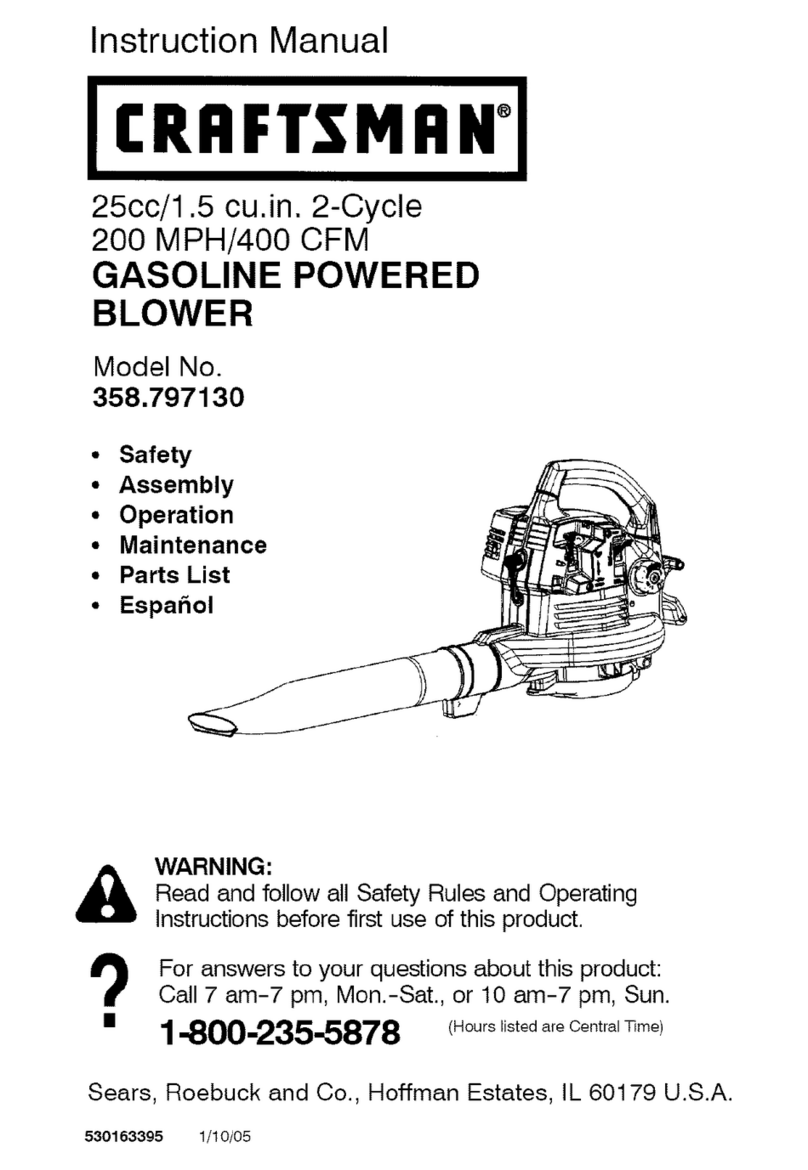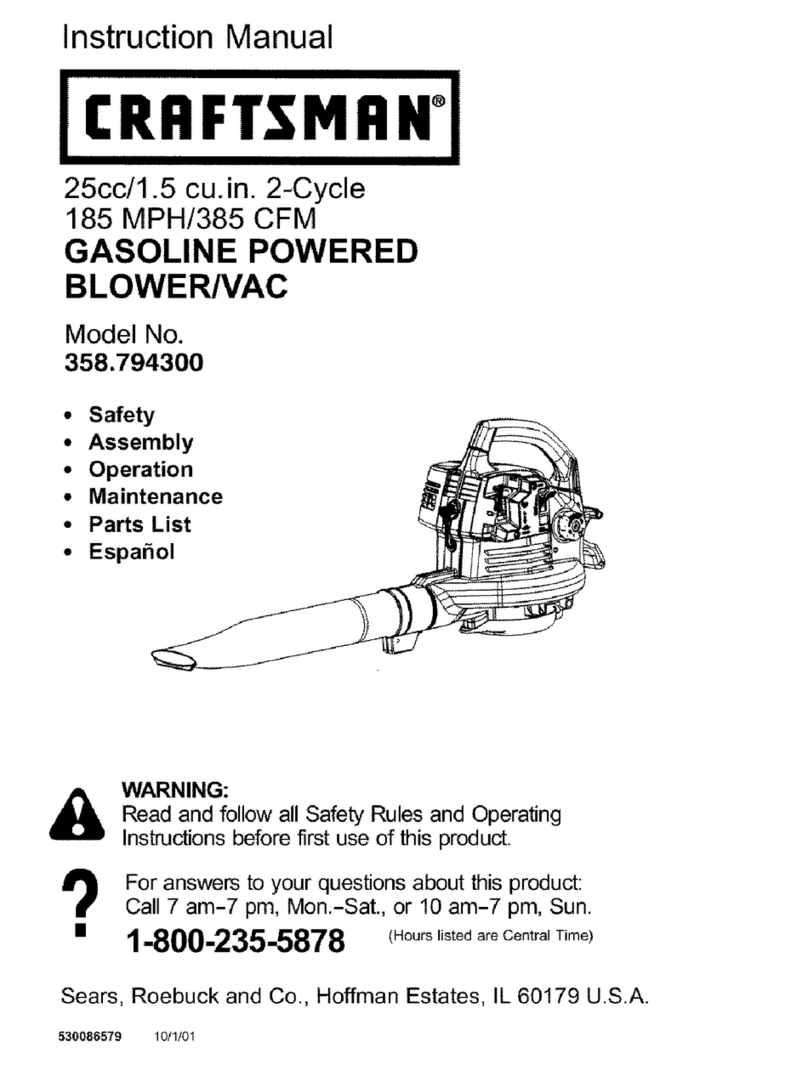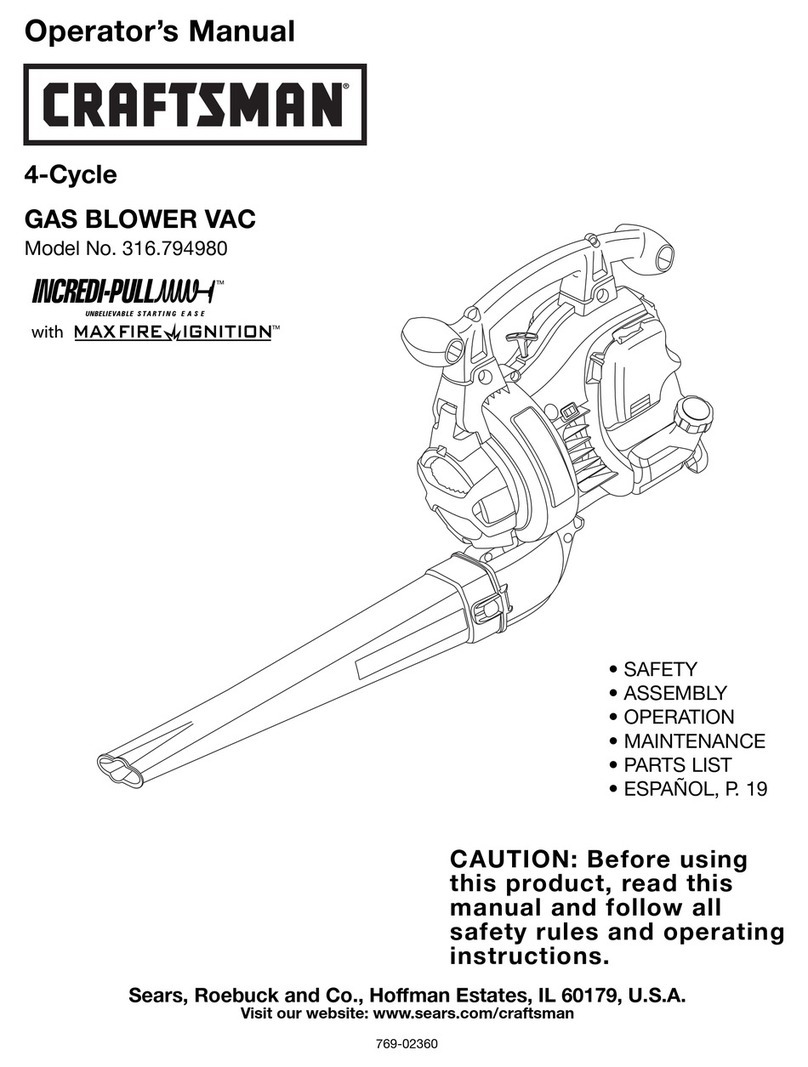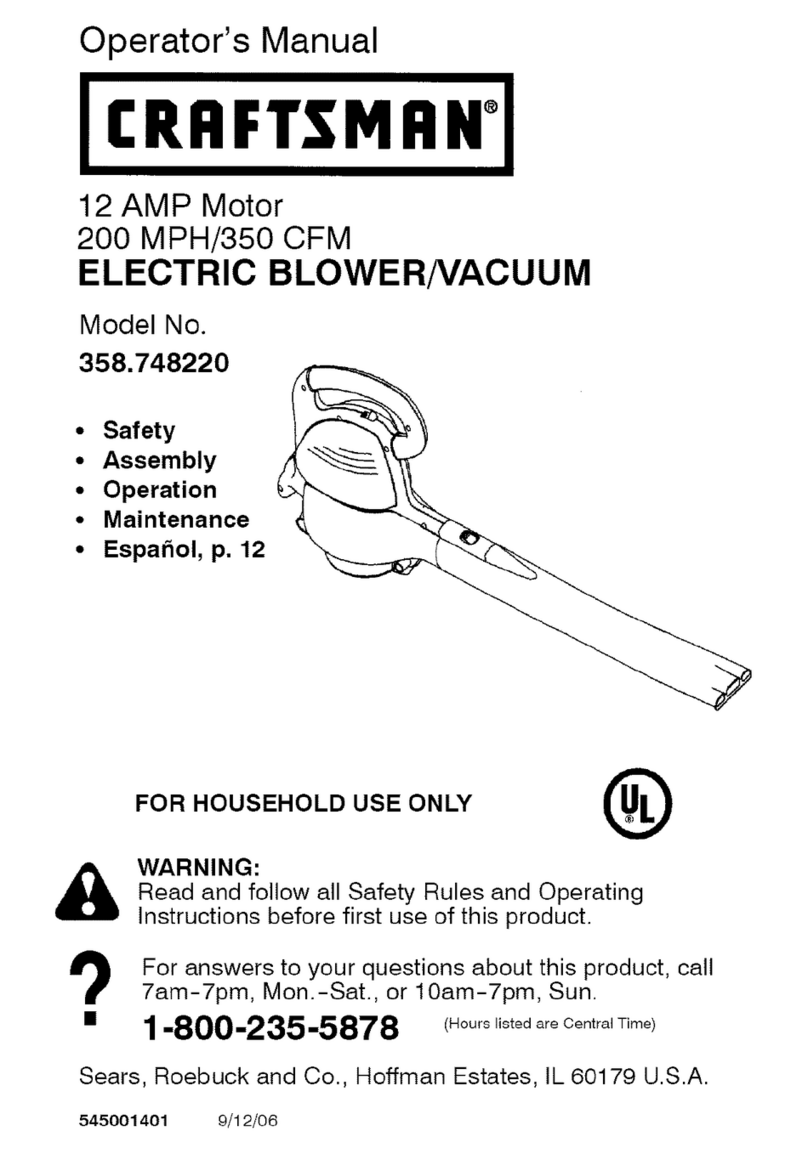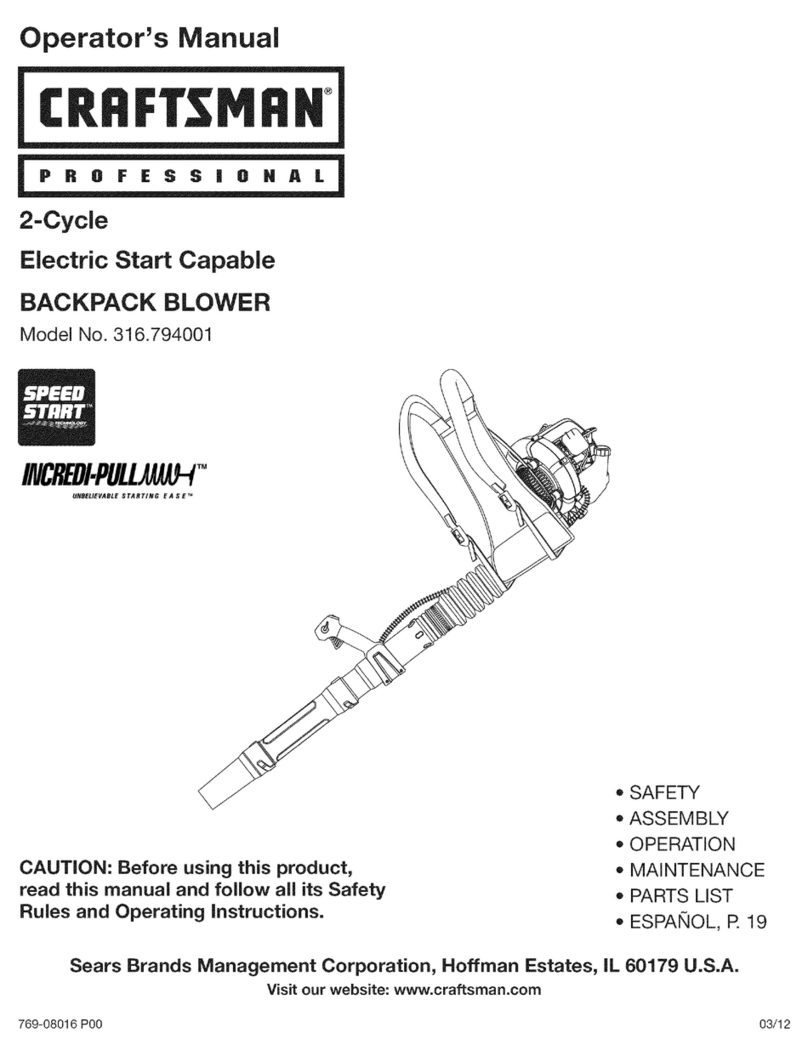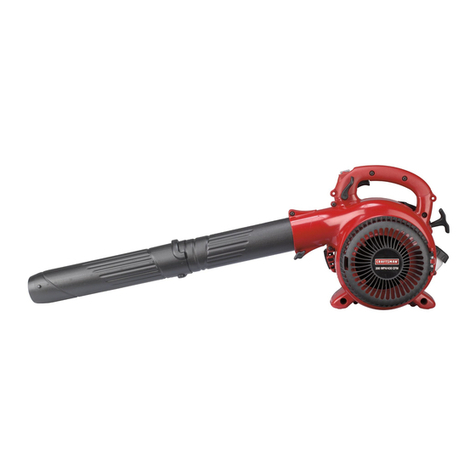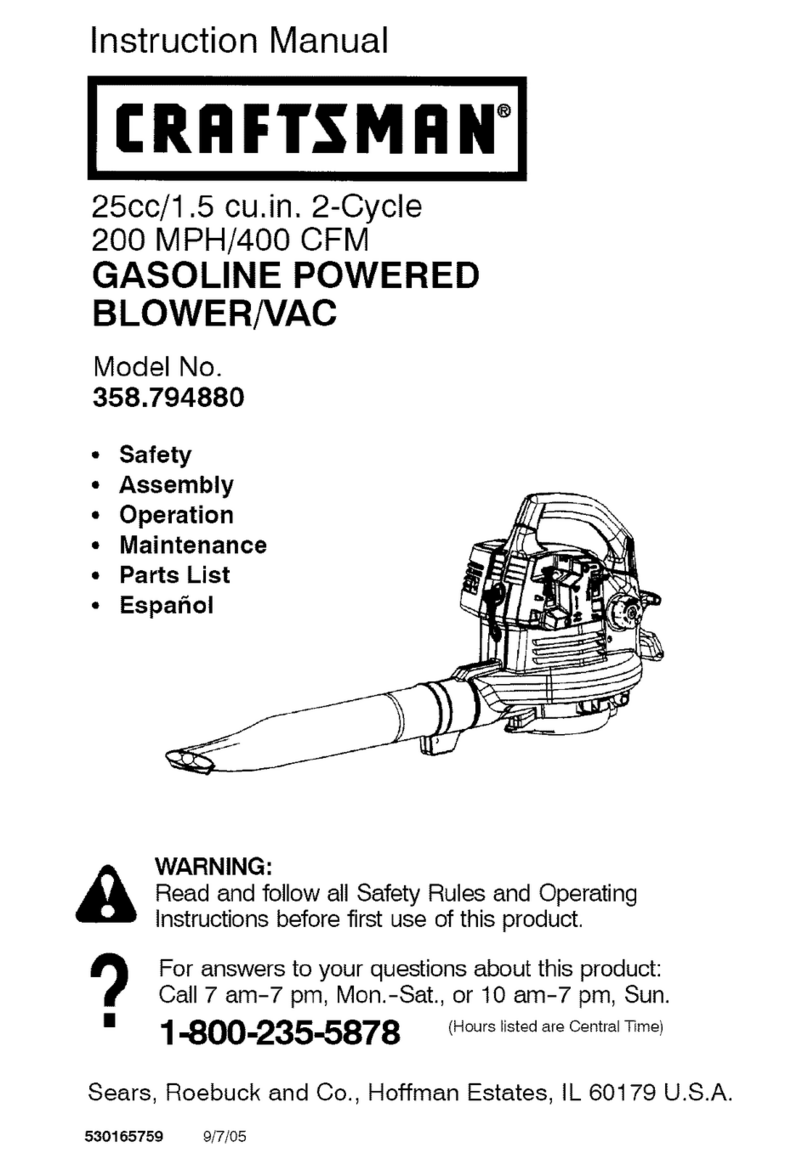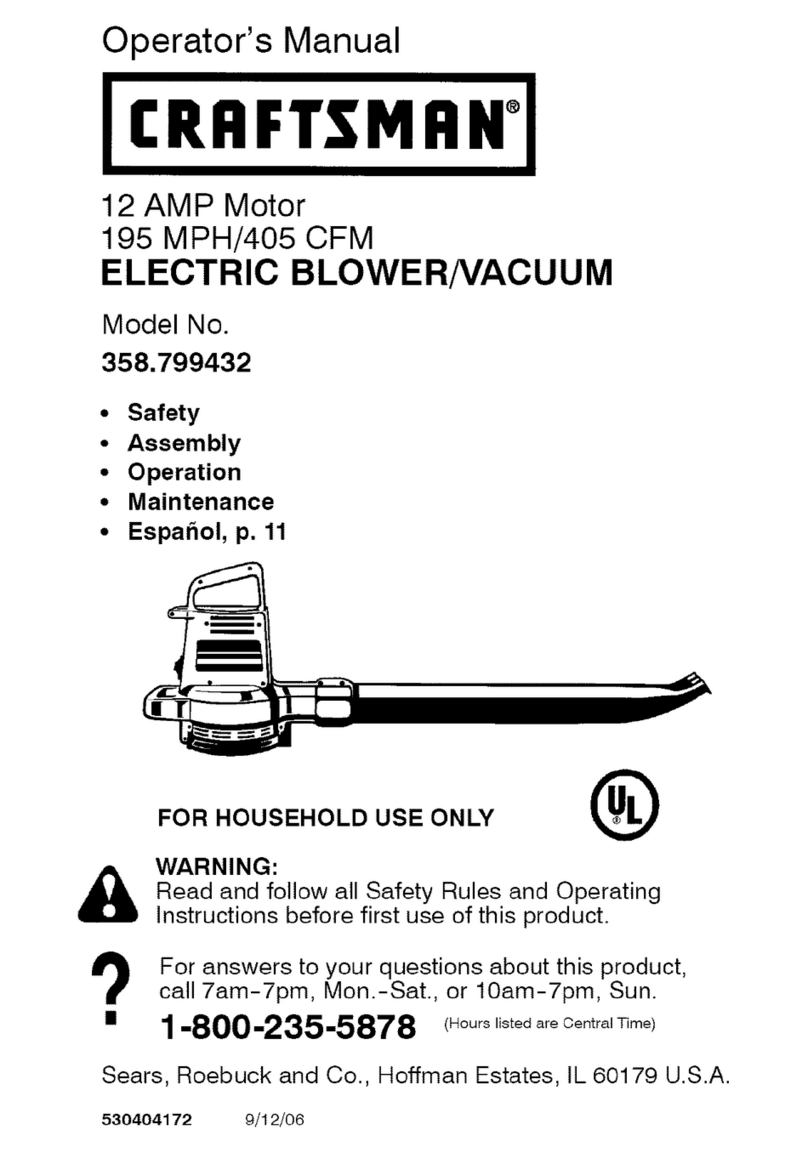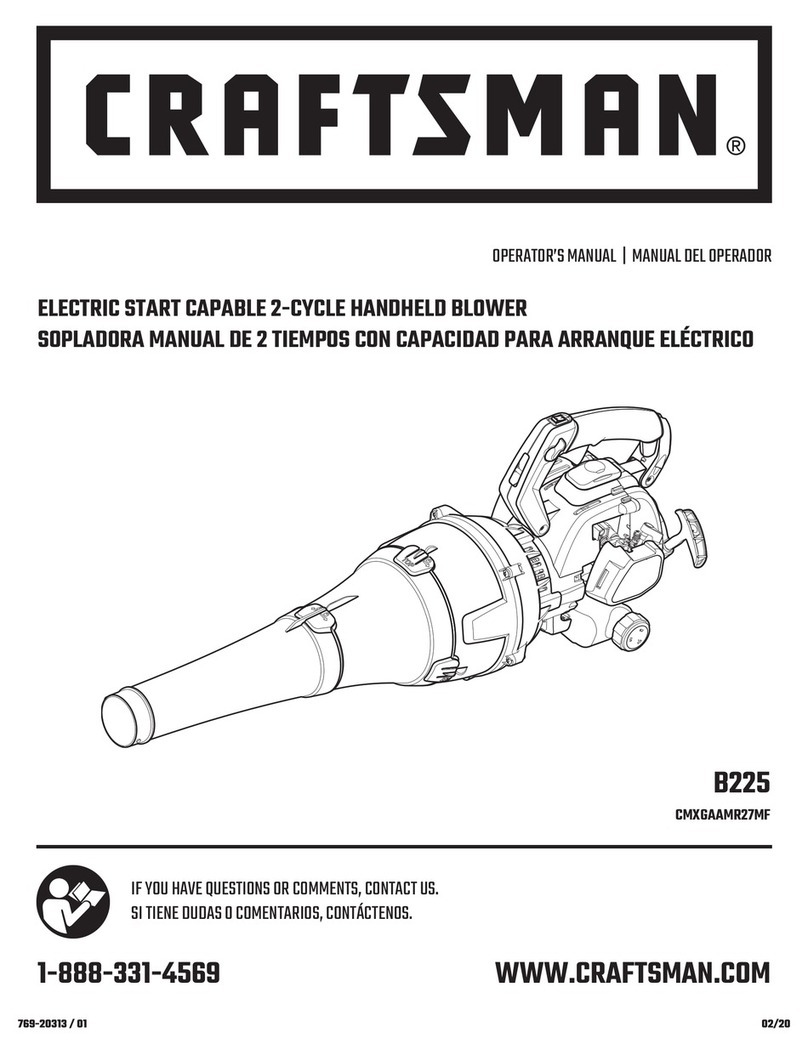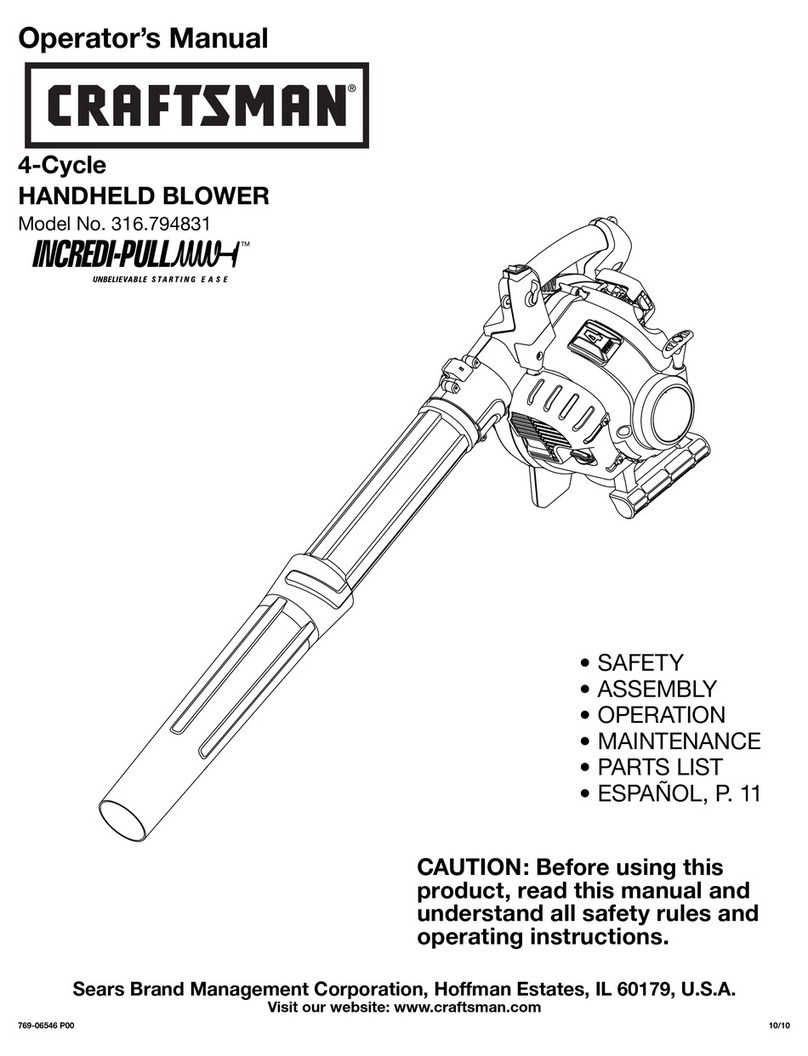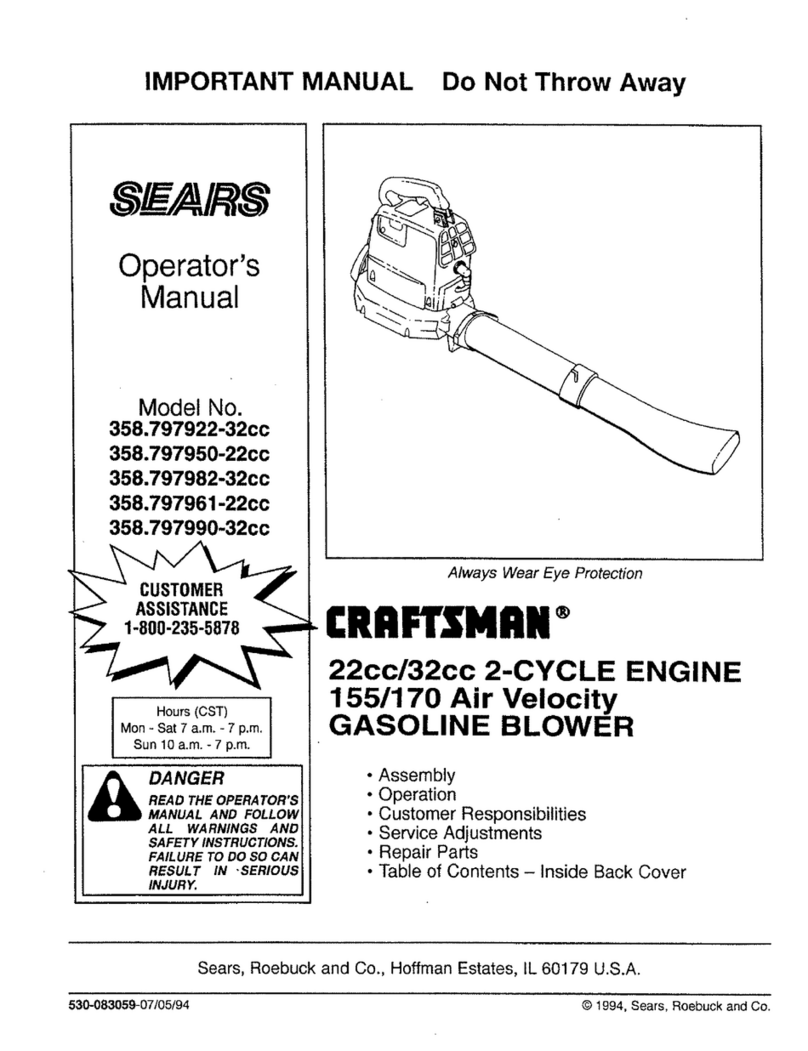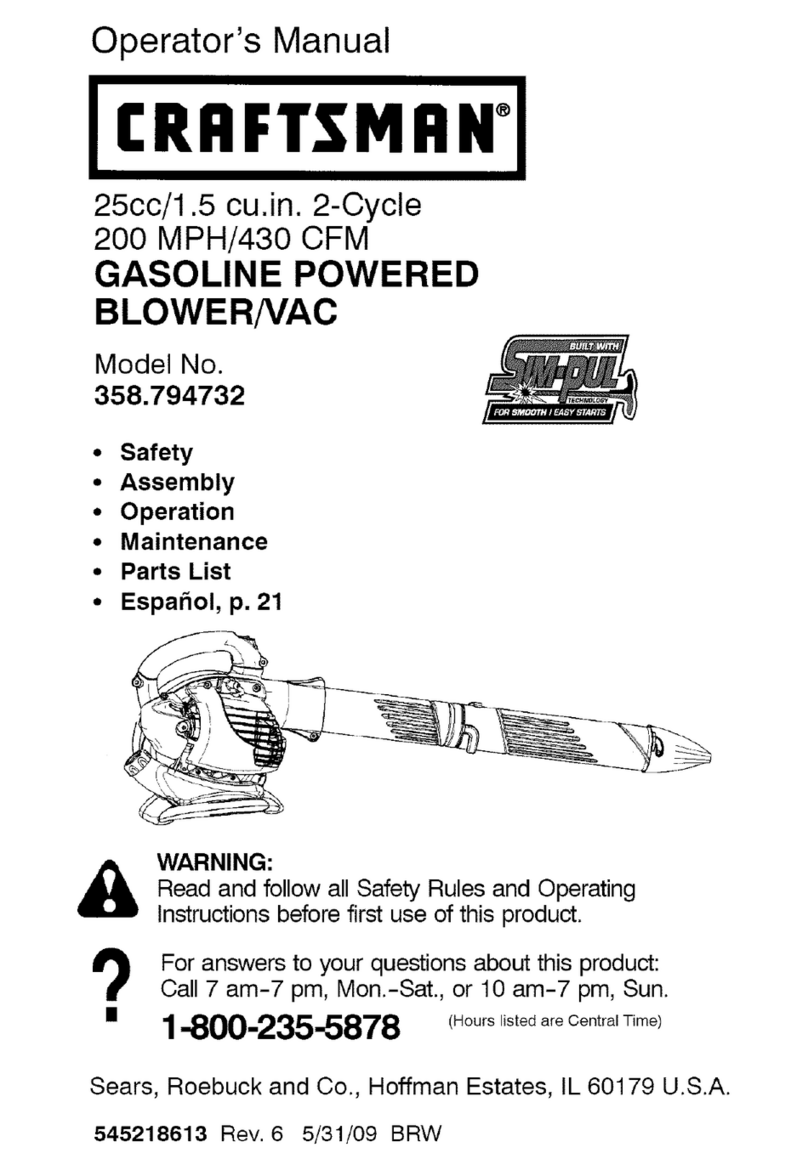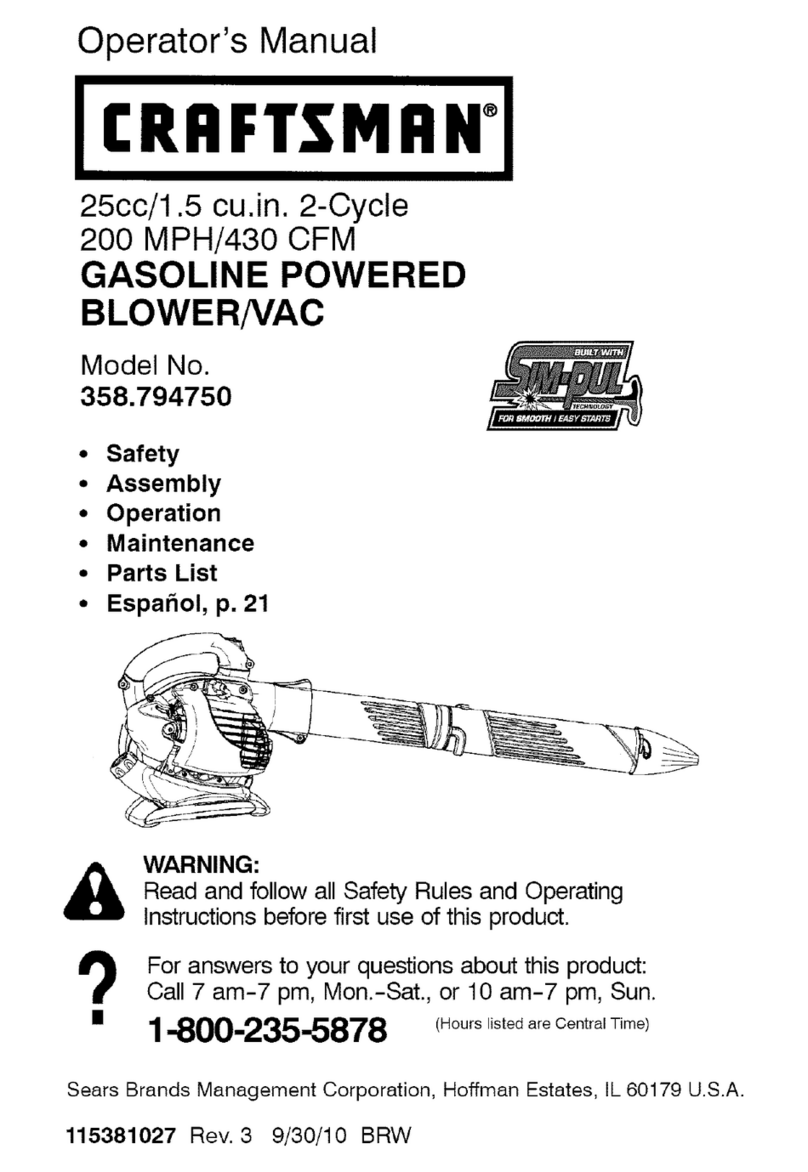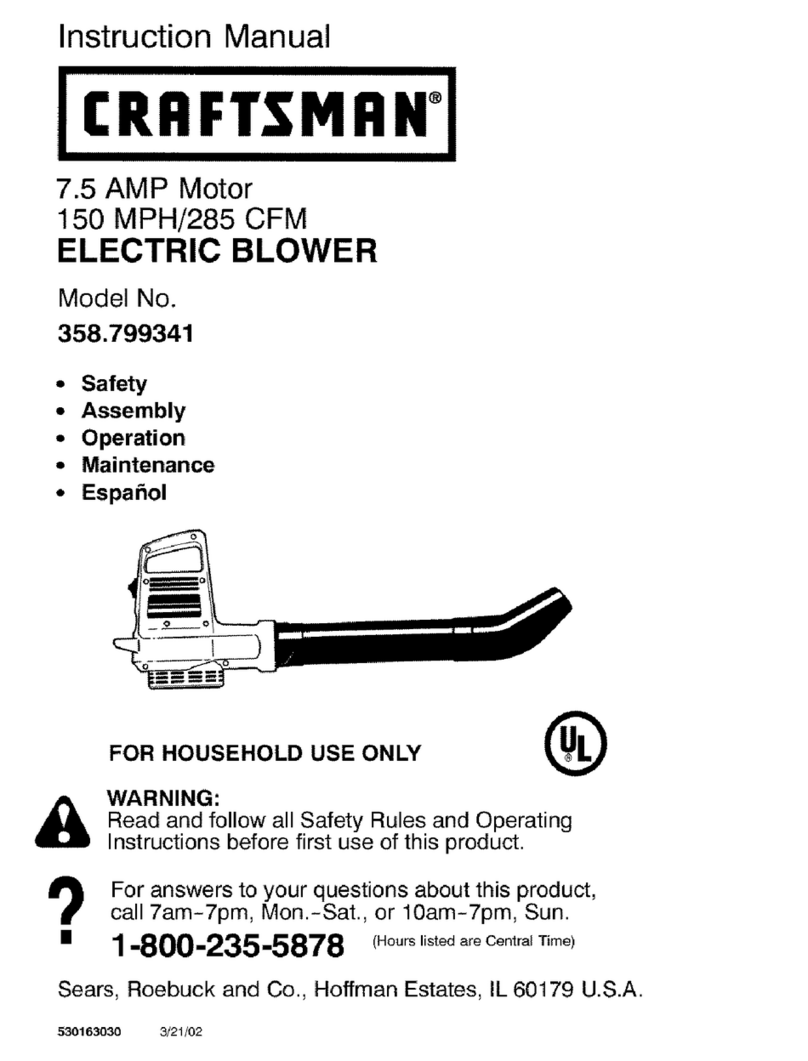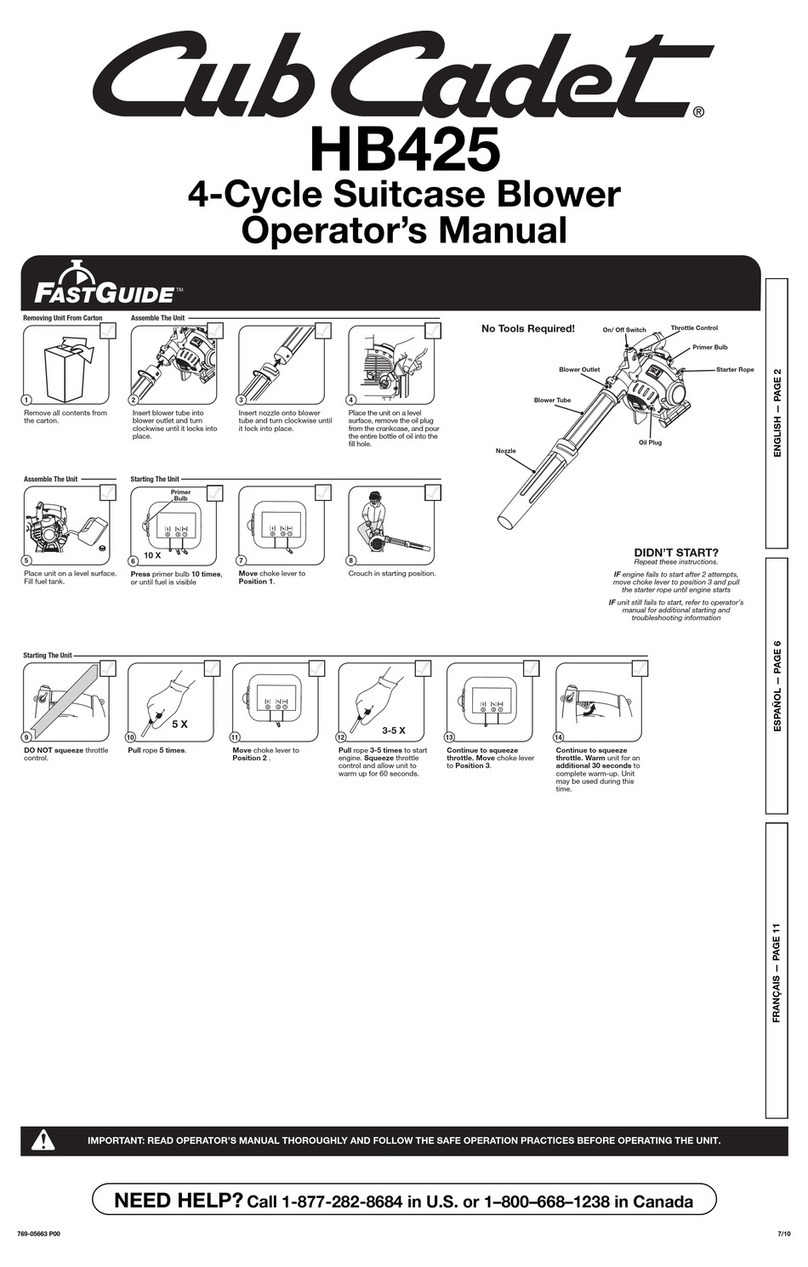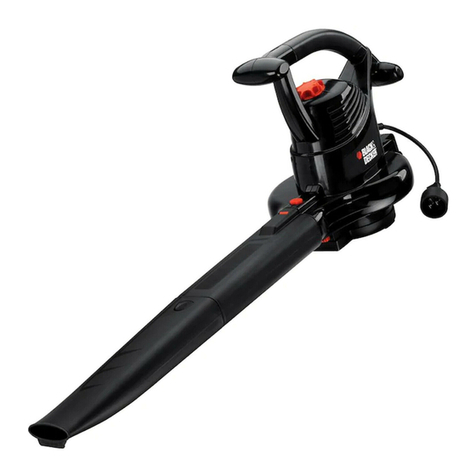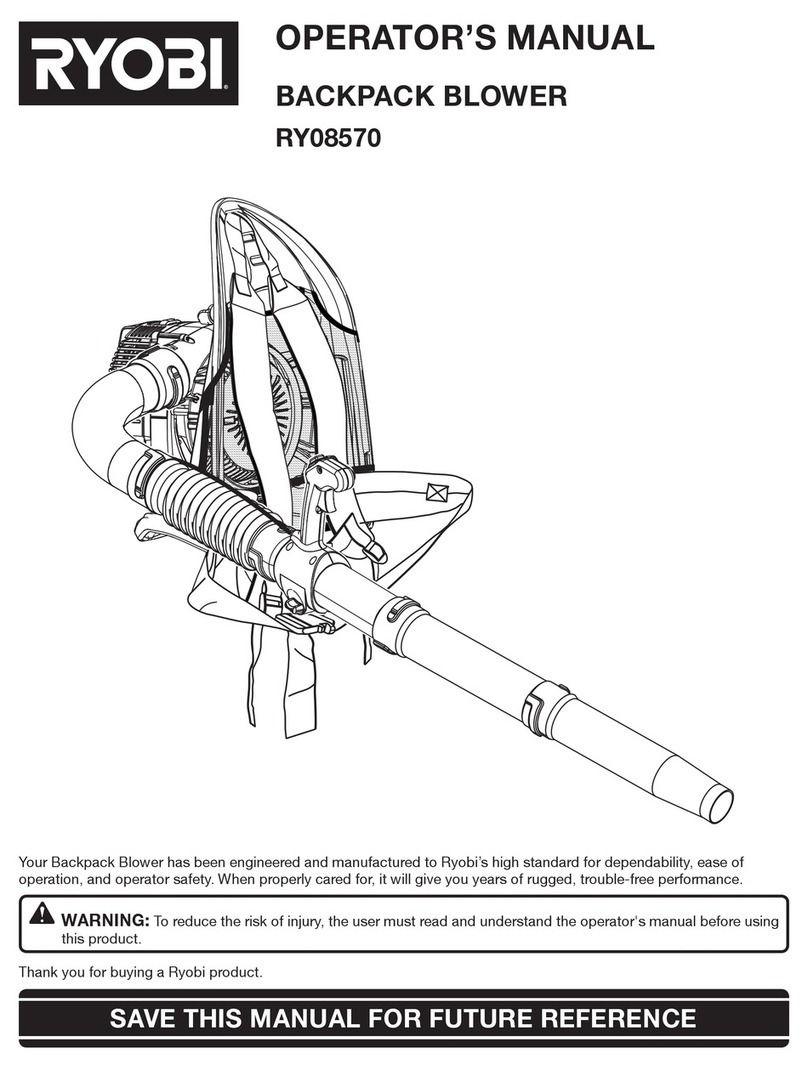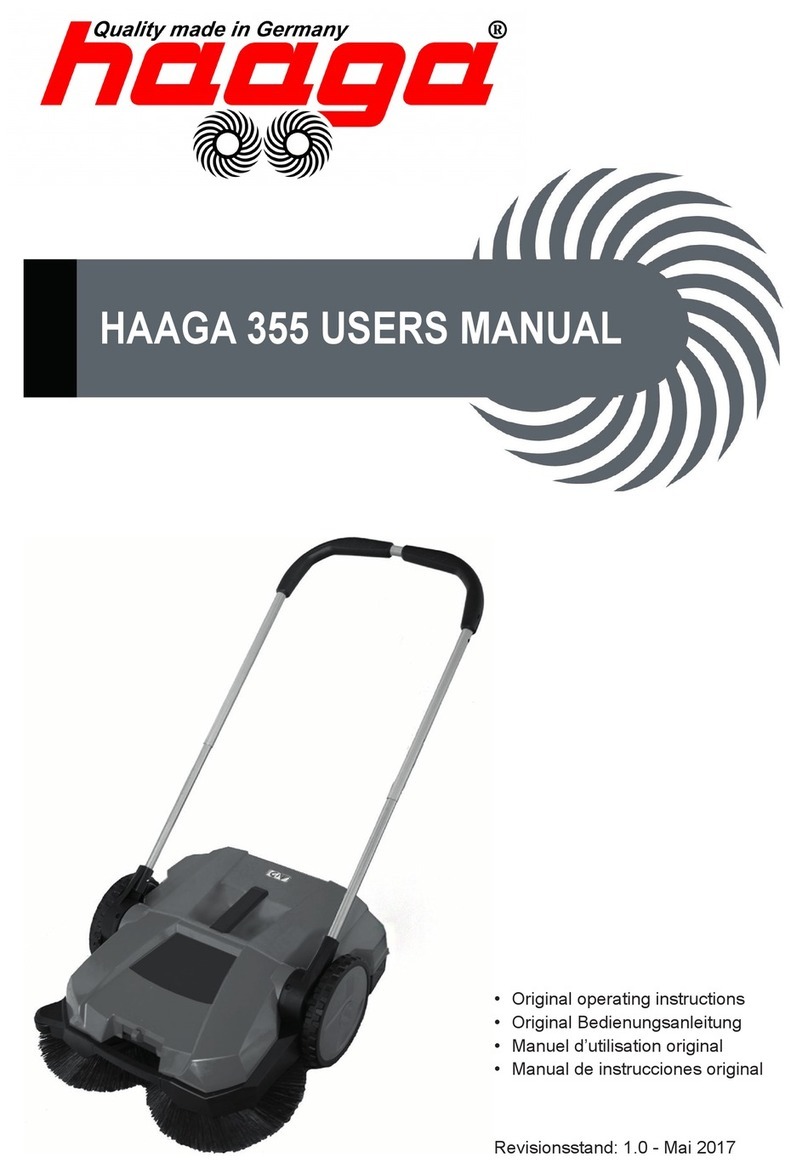• Wear a face or dust mask ifthe operation isdusty.
Long sleeve shirts are recommended.
•Use the unit only in daylight or good artificiallight.
•Keep outside surfaces free from oiland fuel.
•Avoid accidental starting.Be in the starting position
whenever pullingthe starter rope. The operator and
unitmust be in a stable positionwhile starting. See
Starting/Stopping Instructions.
•Do not set unit on any surface except a clean, hard
area while engine is running. Debris such as gravel,
sand, dust, grass, etc. could be picked up by the air
intake and thrown out by the discharge opening,
damaging unit, property, or causing serious injuryto
bystanders or operator.
•Use the right tool. Only use this tool for the purpose
intended.
• Do not force unit. It will do the job better and with:tess:
likelihood of injury at arate for which it was designed.
•Do not overreach or use from unstable surfaces such
as ladders, trees, steep slopes, rooftops, etc. Always
keep proper footing and balance.
•Always hold the unitwith a firm grip when operating.
•Keep hands, face, and feet at a distance from all
moving parts. Do not touch or try to stop the impeller
when it is rotating. Do not operate without guards in
place.
•Do not put any object into openings. Do not use with
any opening blocked; keep free of dirt, debris and
anything that may reduce the air flow.
•Do nottouch the engine or muffler. These parts get
extremely hot from operation. When turned offthey
remain hot for a short time.
• Do not operate the engine faster than the speed
needed to do the job. Do not runthe engine at high
speed when not in use.
•Always stop the engine when operation is delayed or
when walking from one locationto another.
•Stop the engine for maintenance, repair, to install or
remove the blower tubes or vacuum attachments.
The unitmust be stopped and the impeller no longer
turning to avoid contact withthe rotatingblades.
•Use only genuine Craftsman ® replacement parts when
servicing this unit. These parts are available from
your authorized service dealer. Do not use parts,
accessories or attachments not authorized by
Craftsman®for this unit. Doing so could lead to
serious injuryto the user, or damage to the unit,
and void your warranty.
•Never use this unit for spreading chemicals, fertilizers,
or other substances which may contain toxic materials.
•To reduce fire hazard, replace faulty muffler and spark
arrestor, keep the engine and muffler free from grass,
leaves, excessive grease or carbon build up.
WHILE OPERATING UNIT AS A BLOWER
•Never run the unitwithout the the proper equipment
attached. When using unitas a blower, always install
blower tubes.
• Never point the Blower in the direction of people or
pets, or in the direction of windows. Always direct the
blowing debris away from people, animals, glass, and
solid objects such as trees, automobiles, walls, etc.
WHILE OPERATING UNIT AS AVACUUM
•Never runthe unitwithoutthe the proper equipment
attached. When using unit as a vacuum, always install
vacuum tubes, vacuum bag and make sure the
vacuum bag is completely zipped closed.
• Avoid situationsthat could catch the vacuum bag
on fire. Do not operate near an open flame. Do not
vacuum warm ash from fireplaces, barbecue pits,
brush piles, etc. Do not vacuum discarded cigars or
cigarettes unless the cinders are completely cool.
•The unit is designed to pickup dry material such as
leaves, grass, small twigs and bits of paper. Do not
attempt to vacuum wet debris and/or standing water
as this may result in damage to the Blower/Vacuum.
To avoid severe damage to the impeller, do not
vacuum metal, broken glass, etc.
OTHER SAFETY WARNINGS
•Never store the unit, withfuel in the tank, inside a
building where fumes may reach an open flame or
spark.
•Allow the engine to cool before storingor transporting.
Be sure to secure the unitwhile transporting.
• Store the unit in a dry place, either locked up or up high
to prevent unauthorized use or damage, Keep out of
the reach of children,
• Never douse or squirtthe unit with water or any other
liquid. Keep handles dry, clean and free from debris.
Clean after each use, see Cleaning and Storage
instructions.
• Keep these instructions.Refer to them often and use
them to instruct other users. If you loan someone this
unit, also loan them these instructions.
SAVETHESEINSTRUCTIONS
WARNING: The operation of any power tool can resultin foreign objects being thrown intoyour
eyes, which can result in severe eye damage. Before beginning power tool operation, always
wear safety goggles or safety glasses with side shields that are marked as meeting ANSI Z87.1-
1989 standards and a full face shield when needed. We recommend Wide Vision Safety Mask for
use over eyeglasses or standard safety glasses with side shields, available at Seam.
-4-

